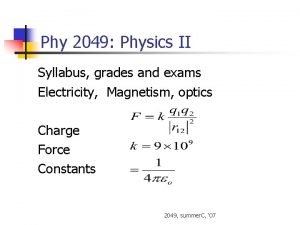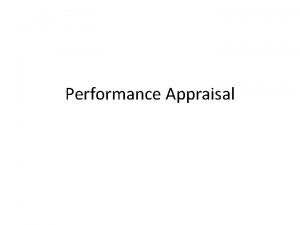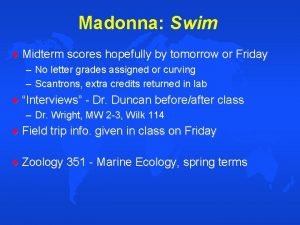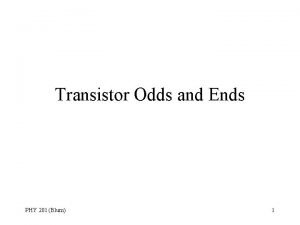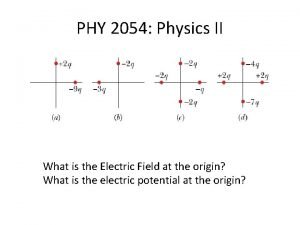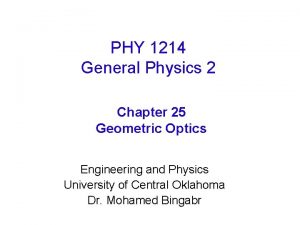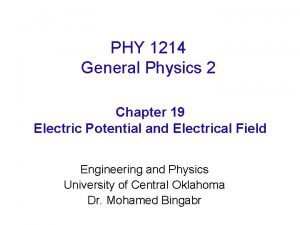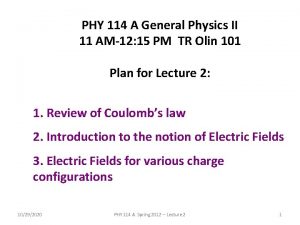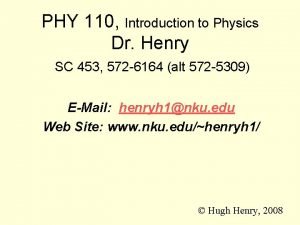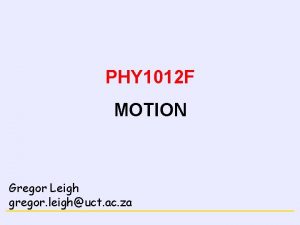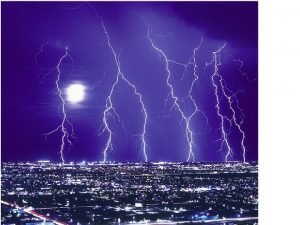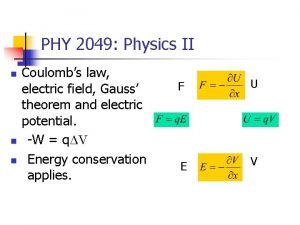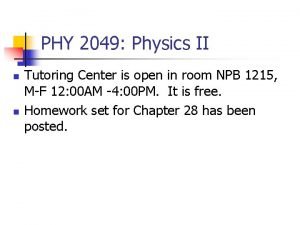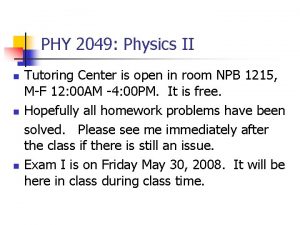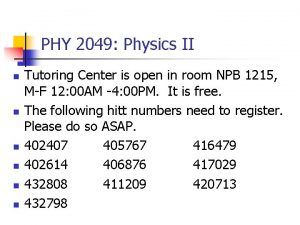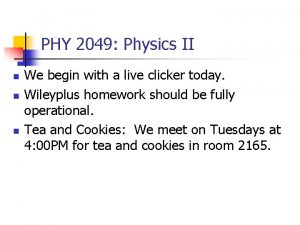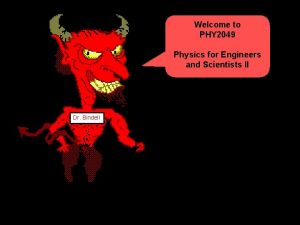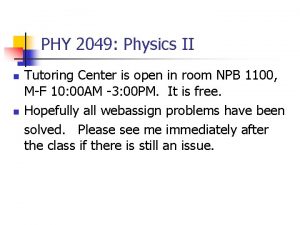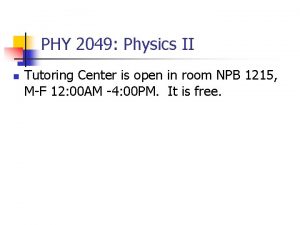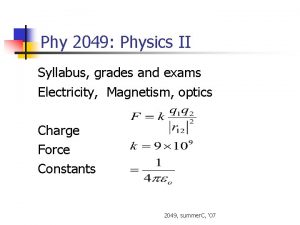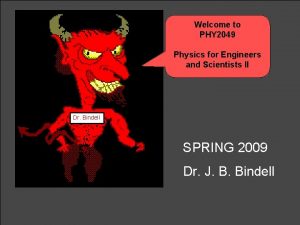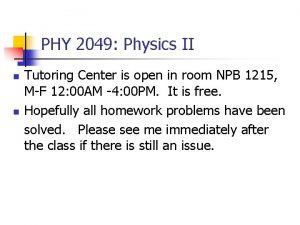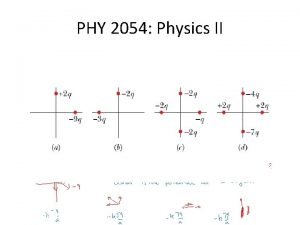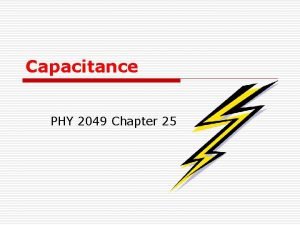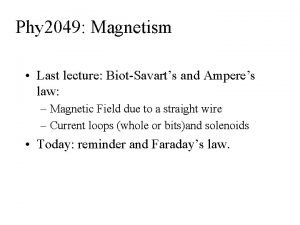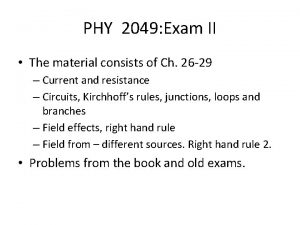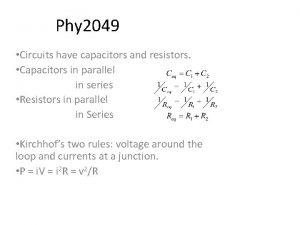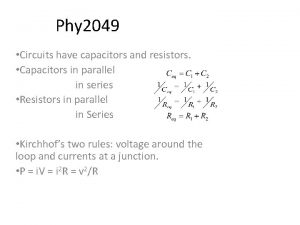PHY 2049 Physics II n n Hopefully all

























- Slides: 25

PHY 2049: Physics II n n Hopefully all homework problems have been solved. Please see me immediately after the class if there is still an issue. Tea and Cookies: We meet on Wednesdays at 4: 00 PM for tea and cookies in room 2165.

quiz n n The electric field at a distance of 10 cm from an isolated point particle with a charge of 2× 10− 9 C is: A. 1. 8 N/C B. 180 N/CC. 18 N/C D. 1800 N/C E. none of these

Quiz 2 n n n An isolated charged point particle produces an electric field with magnitude E at a point 2 m away from the charge. A point at which the field magnitude is E/4 is: A. 1 m away from the particle B. 0. 5 m away from the particle C. 2 m away from the particle D. 4 m away from the particle E. 8 m away from the particle

PHY 2049: Physics II Last week n Coulomb’s law, Electric Field and Gauss’ theorem Today n Electric Potential Energy and Electric Potentials n Numerous cases

Potential Energy and Potential n n n U = k q 1 q 2/r : interaction energy of two charges. Sign matters Force => work => change in K=> change in Potential energy ΔU = Uf – Ui = -W = - ΔK Work done is path independent. K+U = constant.

PHY 2049: Physics II n Electric Potential n n V = U/q = -W/q Units of Joules/coulomb = volt 1 e. V = e x 1 V = 1. 6 x 10 -19 J Also n n n V = kq/r Vf –Vi = -∫E. ds In case of multiple charges, add as a number

PHY 2049: Physics II 1. 2. 3. 4. 5. Neg. , lower ? Pos. , higher Neg. , higher Pos. , higher Can you tell the sign of the charge by looking at its behavior over a surface of potentials. Is the speed at the end bigger or smaller than in the beginning.

PHY 2049: Physics II n n n Vf-Vi = -∫ k q/r 2 dr Choose Vi = V (∞)=0 V(r) = kq/r

n n n V = kpcosθ/r 2 E = -∂V/∂s = Uniformly charged disk n V = ? ?

A C B (24 - 6)

O dq A (24 - 8)

PHY 2049: Physics II

. P r dq (24 - 7)

(24 - 9)

(24 10)

V A B q S S V (24 11)

(24 -

(24 13) A B V V+d. V

(24 14) A B V V+d. V

(24 15) q 2 y r 12 r 23 q 1 r 13 O q 3 x

y Step 1 q 1 x O Step 2 y q 1 r 12 q 2 x O y Step 3 r 12 q 1 r 23 r 13 q 3 O x (24 16)

(24 17) conductor path B A

(24 18)

(24 19)

(24 20) R
 Phy 2049
Phy 2049 Phy 2049
Phy 2049 Performance appraisal in nepali
Performance appraisal in nepali Comma after hopefully
Comma after hopefully Hopefully by tomorrow
Hopefully by tomorrow Name a point that is collinear with the given points
Name a point that is collinear with the given points Phy 131 past papers
Phy 131 past papers Phy 231 msu
Phy 231 msu Great orthogonality theorem
Great orthogonality theorem Rotational statics
Rotational statics Phy theorem
Phy theorem Phy113
Phy113 Phy 121 asu
Phy 121 asu Ddr phy architecture
Ddr phy architecture Phy 205
Phy 205 Accommodation eye
Accommodation eye Physics 2
Physics 2 Phy
Phy Phy
Phy Atm packet phy
Atm packet phy Phy
Phy Real image
Real image Phy 1214
Phy 1214 Phy
Phy Law of motion
Law of motion Complete motion diagram
Complete motion diagram

